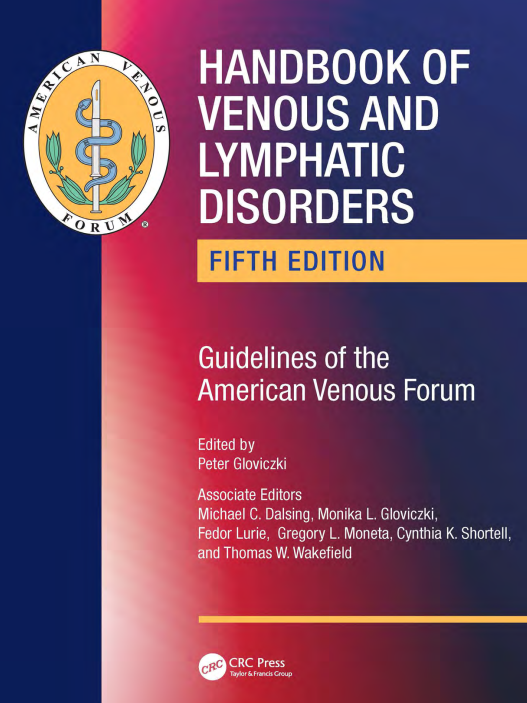In 2000, at the 12th annual meeting of the American
Venous Forum (AVF), Professor Norman Browse gave the
keynote lecture. In his usual provocative way, he ques-
tioned if anything was new in phlebology since the time
of Hippocrates. His presentation was delivered just at the
tipping point of the advancements in research and innova-
tions in the treatment of venous disease. The VEITHsym-
posium continues to be the largest vascular meeting in the
United States. In 2002, when I attended my frst sympo-
sium, seven papers were presented in a venous session on
late Friday afternoon, when most delegates already van-
ished to enjoy the Big Apple. Eleven years later, in 2013,
175 papers were presented on venous disease during 17
sessions over three days, sometimes with simultaneous
presentations. Something had happened. The frst edition
of this Handbook of Venous Disorders was published
under the auspices of the AVF in 1996. Today you hold in
your hands the ffth edition, which includes lymphatic dis-
orders. If you took time to compare the two editions, you
would fnd that the content in the latter refects the sub-
stantial evolution of research and management of venous
and lymphatic disorders that has occurred during the last
two decades.
In 1968, Robert Kistner in Hawaii performed the frst
successful femoral internal valvuloplasty in a patient with
severe deep vein refux. Open surgery in the deep venous
system was born. Generally, it showed that surgery of the
deep venous system did not invariably lead to thrombo-
sis, as was the predominant belief, and, specifcally, that it
was possible to repair the delicate venous valve leafets. It
rekindled interest and thus research, diagnostics, and treat-
ment of deep venous disease, especially, deep venous refux,
chronic deep vein obstruction, and the treatment of exten-
sive DVT. Open venous surgery was, however, not widely
adopted, and its use today is still limited to a few interested
venous surgeons.
The breakthrough for management of venous disease
occurred during the frst decade of the new century. I believe
that several factors converged during this time. The major
reason was, of course, that endovascular procedures largely
started to replace open vascular surgery, except for valve
repair. Additional events contributed, such as studies show-
ing the major impact of venous disease on quality of life
and loss of work, greater awareness in the general popula-
tion of the possible downsides of the untreated disease, pro-
fessional and industrial economic incentives, and greater
acceptance of the percutaneous procedures by patients due
to low morbidity and very rare mortality.
In my opinion, a major landmark was the advancement
of intravascular ultrasound-guided stenting of chronic pelvic
outfow obstructions by Peter Neglén and Seshadri Raju in
Mississippi, starting in the mid-1990s. In 2007, they reported
cumulative analysis at 6 years of stent-related outcome and
clinical and hemodynamic results in 982 patients. The study
showed that venous stenting could be performed safely with
low morbidity and mortality, long-term high stent patency
rate, a low rate of in-stent restenosis, and major symptom
relief. The paradigm for treatment of combined complex
venous disease was once and for all changed.
The AVF was founded in 1989 by 20 members of the
Society for Vascular Surgery. Now, 35 years later, it is the
foremost phlebological society in the world, with a strong
infuence on the management of venous and lymphatic
disease through its publication, the Journal of Vascular
Surgery: Venous and Lymphatic Disorders, and through
important consensus work. This ffth edition of the Hand-
book of Venous and Lymphatic Disorders is an additional
important means to advance evidence-based management
of these disorders. As for all the previous editions, the main
editor is Peter Gloviczki. For this ffth edition, he has chosen
the following associate editors, all well-known leaders of
the AVF: Michael C. Dalsing, Monika L. Gloviczki, Fedor
Lurie, Gregory L. Moneta, Cynthia K. Shortell, and Thomas
W. Wakefeld. This edition has undergone a radical revision
with the addition of 19 novel chapters and a completely
new part on “Critical issues in venous and lymphatic dis-
ease.” Forty-nine new authors have contributed chapters,
which guarantees a fresh modern update of the content.
The ffth edition of the Handbook is the principal text-
book in the world providing guidelines in the management
of venous and lymphatic disorders. It represents not only
the important role the AVF has but also includes excellent
contributions from Europe and Latin America as a mark
of the important and benefcial international collabora-
tions. This book is the premier go-to book for experienced
venous therapists as well as for those taking their frst steps
into this rewarding feld.
Bo Eklöf, MD, PhD
Past President, American Venous Forum
Associate Editor, Emeritus
Handbook of Venous and Lymphatic Disorders

















